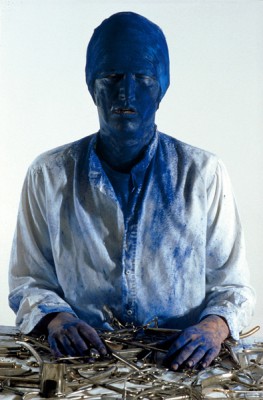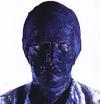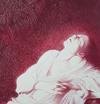Texts and Essays
Yaso magazine, Japan – September 5, 2003
MY ART IS NOT AN ANSWER - IT IS A QUESTION.
"Children and lunatics cut the gordian knot which the poet spends his life patiently trying to untie." Jean Cocteau
Helnwein:
"I think art always reflects the society and the time the artist lives in; it always tells you something about the condition of the culture.
This is the age of materialism and profit, accompanied by its favorite all-eating pet - the entertainment industry. Therefore in order not to sink into oblivion, in a desperate struggle to be heard and seen, many artists and curators try to compete with this multi-media-entertainment-Godzilla, trying to be just as loud and cheap and stupid. That's why 70% to 80% of all the contemporary art in our museums is crap.
It's true though that each time has its own aesthetic values and if you want to reach the people of today you have to develop an artistic language that they can understand. And that's what I try to do - my audience is the great love-affair of my life. I am obsessed with my public, and all I want to do with my art is touch them and move them and to hold them tight - and sometimes I want to kick their ass. That is all I care about.
But I also listen to them and take them and their responses serious, because they and other artists are the only ones that ever taught me anything."

Yaso: 1. About the images of the Nazis.
You began your life in the wake of World War II in Vienna, and you have often used Nazi images in your works. I suppose you received very diverse responses in 1960-70s when people still remembered those tragic sights and experiences vividly as opposed to what you get today when young people only know about the war through books and films. For example, we see many works of art in which artists combine Nazi images and the ones the Nazis banned as "degenerate" art.
Do you intend to make any differences in the way you treat the Nazi-images today from decades ago, or is your methodology the same?
Helnwein:
Let me try to explain how I ended up using this imagery in my work - it's far more simple and less scientific than you might think.
My art is an ongoing dialogue that I started 30 years ago with my public. Since the early days of my childhood I was under the impression that the world I lived in was a madhouse. I could never figure out what this was all about, nothing seemed to make much sense. People around me, especially grown-ups who pretended to be in charge, acted extremely weird. Everybody seemed to be entangled in a web of complex invisible rules and laws.
I figured this out because whenever I got smacked or kicked I was told that I had just violated one. I always thought - how did I end up in a place like this? What was I doing here? The only thing I knew was that this was not home - I didn't belong here. But who was I then? Where did I come from? Obviously I was in a state of total amnesia.
However, for the time being I seemed to be stuck in a no-fun two-dimensional world -- a cheap, silent, black and white movie in slow motion. What I didn't know then was that I had been born in Vienna shortly after the second of the two world-wars that my stupid ancestors had caused within the last 30 years - and lost.
Many buildings were in ruins, destroyed by the bombs of the allied forces now occupying the city. I never heard anybody sing and I never saw anybody laugh. And when I found the photographs of my father, my grandfathers and my uncles all in uniforms of Hitler's army, I started to ask questions.
Unfortunately, I was speaking either in the wrong tounge or they also suffered amnesia, because I never got any answers. But I was a very insistive child and I never gave up asking, despite the fact that it didn't get me anywhere.
When I was 18, there was this one miraculous moment when I suddenly knew that there was a way out: I had to become an artist. And I started to paint. I didn't know much about the art-world and other artists, and I didn't care about styles and techniques. I just began to formulate my old questions now as images, and step by step I developed my own visual language.
But I was not prepared for the avalanche of emotional reactions that my little watercolor-paintings triggered. I was quite surprised to realize that suddenly I seemed to be in possession of a superior magic language, capable of cutting through everything and reaching deep into the hearts of people and moving and touching them.
And to my amazement this nation of mutes started to talk, to respond. I suddenly found myself in a very powerful dialogue with a growing number of people. It never stopped and became the momentum and destiny of my life.
Yaso: 2, Reality that occurs in two-dimensional fields.
In Japan today, comic books and TV animation are dominantly influential to the degree that many of the boxers took up the sport after they had read comic stories about boxing. The two-dimensional, virtual rendition of boxers feels more real and overwhelming than actual ones.
What is your idea about the reality that two-dimensional representation has, such as cartoons, and the potential it has to affect the human subconscious?
Helnwein:
Of course imagination and illusion are always so much more powerful and bigger than this mediocre and boring thing called reality.
What is reality? At any given time or place in history it was always the ruler - this priesthood of power - that defined and told you what reality is. All the education-systems had (and have) only one purpose: to make you agree with their fabricated "truth" or "reality" and the attached little belief-systems, and to abandon and betray your own reality - your own magic and boundless inner world - your spiritual home-universe.
Of course their arbitrary, stupid, little belief-systems vary from time to time and from nation to nation, but their methods are always the same: threats, punishment, pain and terror, if you don't submit yourself. It was one of these twilight-zone "realities" that I woke up to in post-war Vienna, created by the very same people that had just completed the killing of 50 million people.
And into that limbo of my childhood some merciful god (or goddess) dropped the first German Micky-Mouse comic-books with all the Donald Duck-stories by that genius Disney-artist, Carl Barks. Opening my first Donald Duck comic-book felt like seeing the daylight again for someone who had been trapped underground by a mine-disaster for many days.
I blinked carefully because my eyes hadn't gotten used to the dazzlingly bright sun of Duckburg yet, and I greedily sucked the fresh breeze into my dusty lungs that came drifting over from Uncle Scrooge's money bin. I was back home again, in a decent world where one could get flattened by steam-rollers and perforated by bullets without serious harm. A world in which the people still looked proper, with yellow beaks or black knobs instead of noses.
And it was here that I met the man who would forever change my life - a man who, as the Austrian poet H.C. Artmann put it, is the only person today that has something worthwhile saying: Donald Duck.
Whenever I closed my comic-book I was back in this two-dimensional nightmare, but it was not the same anymore because - now I knew there was another world to which I could always escape if I wanted.
Yaso: 3. About death.
Your photographs including the portraits of Joseph Beuys, Andy Warhol, William Burroughs, Keith Richards, et al have an odor of death. I suppose human faces have many expressions inherently and one can often display the solemnity that he/she will show at the moment of death when he/she is still alive.
Do you choose the expressions that look like dead faces deliberately when you take portrait photographs and create paintings based on them?
Helnwein:
My series "Faces" is also the result of a dialogue. I keep the procedure as simple as possible.
Usually I meet somebody I am curious about, and I leave everything to the moment of encounter. I have no plan or preconception of what the person should act or look like. There is always a moment of uncertainty involved, also on the side of the person to be photographed. Nobody really knows what the next step will be.
Andy Warhol, after his usual compliments and small-talk, sat down and didn't talk or move for more than an hour - it was a strange, uneasy silence at first, and I didn't know what to say; everything seemed to be frozen in time, like Andy's face, and slowly I felt a relief. All the social veneers were crumbling, and I started to shoot. I felt like I was floating in outer space - only Andy and I - a moment of truth.
All of my better photographs caught a moment similar to that one. Developing a photograph of a face is always an adventure because you never know what the outcome will be. It's like opening a secret chamber and unearthing something for the first time that nobody has ever seen before. It's rare, but in the hand of a master the camera can reveal aspects of a personality that are invisible for the naked eye.
William Burroughs said that faces never stay the same, they constantly change, acting like a screen onto which different images are projected from within.
Yaso: 4. About the U.S.A.
It seems that you can anticipate the future because you have revealed and visualized various social deficiencies and problems in your work. I think the best example was the piece in which Mickey Mouse and Donald Duck marching with the flag of Christianity while invading Iraq.
Helnwein:
Again I have to go back to my bleak childhood, where my only contact with culture was the dark and cold Roman Catholic church with all these paintings and sculptures of tortured people and sacred corpses.
And one day, like beams of light from a better world, Donald Duck, Elvis and Charlie Chaplin - the first messengers of American culture hit us, and we realized that all these exciting, arousing and inspiring things were coming from America and the English-speaking world. The Blues, Rock n'Roll, the Rolling Stones, Jimi Hendrix, the comic books, the movies, and later Bukowski, Burroughs and others. This overwhelming, all-transforming magic power of the trivial arts that you couldn't resist.
But the bullets of Dallas that killed Kennedy suddenly ended this innocent, brief moment in history. The dream was over. It was the beginning of our long way down - Vietnam, the killing of Martin Luther King, Watergate, the stock market, Enron, the Gulf-wars, Columbine, 911 and so on. Finally the western-Christian empire is dying. The Roman empire is falling again, like a fatally wounded giant going down in slow motion.
I have a studio in Los Angeles and I love to work there, because I think it's the furthest point in this process of decay, this final victory of materialism over the spirit. I want to be on the edge of the present and I think it's my obligation as an artist to witness how we are heading for this brave new world, and to watch how skillfully its new masters use the oldest and most proven tool: fear.
Drowning us with "news" about terrorists, diseases, drugs, child abuse, serial-killers and economic catastrophes.
Yaso: 5. About being shocking and sensational.
I think contemporary art is deadlocked with its conventional one-way communication from artists to viewers. In addition, the ways they criticize society are also stereotyped. Meanwhile, your works are flexible enough to allow viewers to [re]construct them in their minds as they like. For instance, those who think that your works are products of child abuse reveal their one-sided view of the world. Each of your works is deliberately planned to evoke diverse responses.
Why do you take the risk of getting misunderstood when you present so many provocative and shocking images to the public though you can avoid it?
Helnwein:
I think art always reflects the society and the time the artist lives in; it always tells you something about the condition of the culture.
This is the age of materialism and profit, accompanied by its favorite, all-eating pet - the entertainment industry. Therefore in order not to sink into oblivion, in a desperate struggle to be heard and seen, many artists and curators try to compete with this multi-media-entertainment-Godzilla, trying to be just as loud and cheap and stupid. That's why 70% to 80% of all the contemporary art in our museums is crap.
It's true though that each time has its own aesthetic values and if you want to reach the people of today you have to develop an artistic language that they can understand. And that's what I try to do - my audience is the great love-affair of my live. I am obsessed with my public, and all I want to do with my art is touch them and move them and to hold them tight - and sometimes I want to kick their ass. That is all I care about.
But I also listen to them, and take them and their responses serious, because they and other artists are the only ones that ever taught me anything.
I never had the impression that my audience misunderstood or misinterpreted my intentions. Some art-critics and "experts", in their bloated and clueless self-importance, don't get it - as usual. But I guess, if this "nomenclatura" of self-appointed experts would accept and embrace my work - my God, I would really be scared.
Yaso: 6. About damaged and restrained bodies.
In Japan, there are growing numbers of young people who are driven to cut their own wrists. They have no intention to commit suicide but want to hurt themselves. Besides, there are some others who have fun strolling about putting on bandages or having their photographs taken lying in coffins.
There are others who like to get dressed like Lolita although they never want to become the object of sexual desire. These people may somehow want to get familiar with death unconsciously because it doesn't feel real at all to them.
The girls you depict often wear bandages or are hurt, yet they don't look like they were hurt by somebody else. They seem to suggest the fetishism of such a situation and the scars even look like stigmata.
What sort of ideas and messages do you hope to deliver by the images of depicted scars, damaged surfaces of photographs/films and restrained bodies?
Helnwein:
My question always was: why do people always cause so much pain to other people? Why does everybody look so hurt? When I started to paint I didn't feel I had any message. My art was not an answer - it was a question.
At the end of 1969 I painted my first painting, and with that I started an expedition into unknown territory. 30 years later I'm still on this amazing voyage of discovery, I'm still asking my questions and I'm still poking with my pictures into this matrix that smothers everything.
Yaso: 7. Communication with children.
Children are our future. To talk to children is to talk to our future.
When you work with your daughter or other children, do you exchange
ideas about the content of your work and other things with your children?
How do you explain your intention? Do they understand what you mean?
Helnwein:
I always felt so much more comfortable communicating with children than with grown-ups. Everything is far more simple and makes so much more sense - to me at least. In the world of a child anything is possible, there are no limits for the imagination, and magic and miracles are a natural part of it - art and life are one.
Communicating with adults, on the other hand, sometimes seems to be so limited and incredibly complicated and above all boring. Unfortunately it's the grown-ups that rule the world and make the laws and all kids have to go through their training-program called education. Once they come out on the other side they are usually broken, their magic is gone and they can now be citizens, soldiers, clerks, politicians, prostitutes or other interesting things like that.
Funnily enough it doesn't always work. Some kids seem to be relatively immune to that program, and one day I realized: that's what almost all artists have in common - to a certain degree they all managed to continue being a child.
Picasso said: "All children are artists. The problem is how to remain an artist once he grows up." That's the struggle of the artist: how to cope with a foreign world like this, how to play a part in it. I always knew I was an outsider, but guess what - I like it and I feel there is a strong bond between artists and children and all other sacred fools.
It's like Marilyn Manson said: "The genius finds sanctuary among children and madmen to survive." And Cocteau: "Children and lunatics cut the Gordian Knot which the poet spends his life patiently trying to untie."
http://www.helnwein-education.com/
http://www.gottfried-helnwein-child.com/
http://kristallnacht.helnwein.com


